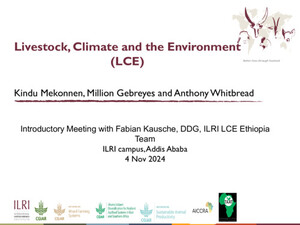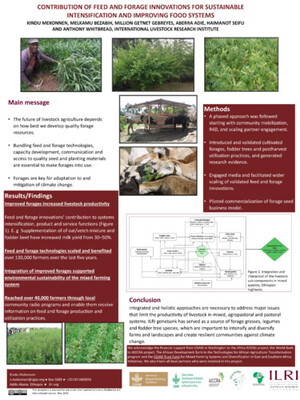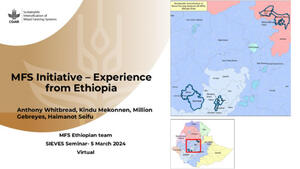
Pushing back against fertilizer use myth in northern Tanzania
In Babati District, northern Tanzania, a popular but misleading myth persists. That use of inorganic fertilizer ‘kills’ the soil. As a result, for many years, majority of farmers in the district do not use fertilizer to replenish depleted soil nutrients.
But, in the last five years, researchers in the Africa RISING program have invested significant resources and effort to dispel this myth. Some progress is being made, but more still remains to be done to change this belief.
The poster below shares finding from a study on ‘Economic analysis of fertilizer options for maize production in Tanzania’ that is demonstrating to farmers the difference that correct application of inorganic fertilizers makes to their maize yield. Different fertilizer options were compared in terms of financial benefits in maize production. The fertilizer options used in the study were Diammonium Phosphate (DAP), Minjingu Mazao, Minjingu rock phosphate, farmyard manure, and a combination of farmyard manure and Minjingu Mazao (mixed option). In the farm, maize was intercropped with legumes (pigeonpea in lowland villages and beans in upland village) and tested with all fertilizer options. Data from agronomic trials by Africa RISING in 2013 and 2014 was used. A participatory cost benefit analysis involving 20 groups of farmers who tested two of the fertilizer options (DAP and Minjingu Mazao) on their farms was also done.
Results show that in general, application of fertilizer increases the net financial returns as compared to the farmers’ practice (not applying fertilizer).
Of the different fertilizer options, DAP fertilizer yields the highest net returns followed by Minjingu Mazao, Minjingu rock phosphate, and the mixed option. However, differences among these options are statistically insignificant implying that farmers could use any of the options without offsetting much income. Surprisingly, the net return associated with farmyard manure alone is lower than the control option (without any fertilizer).
The fertilizer options were also evaluated in terms of risk, which is an important factor that influences farmers’ decisions whether or not to adopt technologies. Results show that Minjingu Mazao is the most risk efficient option relative to the farmers’ practice. However, combining Minjingu Mazao with farm yard manure would be the most preferred option for highly risk-averse farmers. Minjingu Mazao would take the next position with regards to risk.
Results of the participatory cost benefit analysis supports the above results. In this case, the net returns associated with DAP and Minjingu Mazao (the two fertilizer options considered for this analysis) are more than double the traditional practice; while farmers had the perception that the two options would result in comparable net returns.
The limited use of inorganic fertilizer by farmers in this part of Tanzania has hampered productivity growth. This study reveals that use of inorganic fertilizers would increase productivity and income. Therefore, more efforts by different stakeholders to encourage use of inorganic fertilizer would go a long way in enhancing food security and reducing poverty among smallholder farmers in the region.
Written by Bekele Kotu, IITA

















